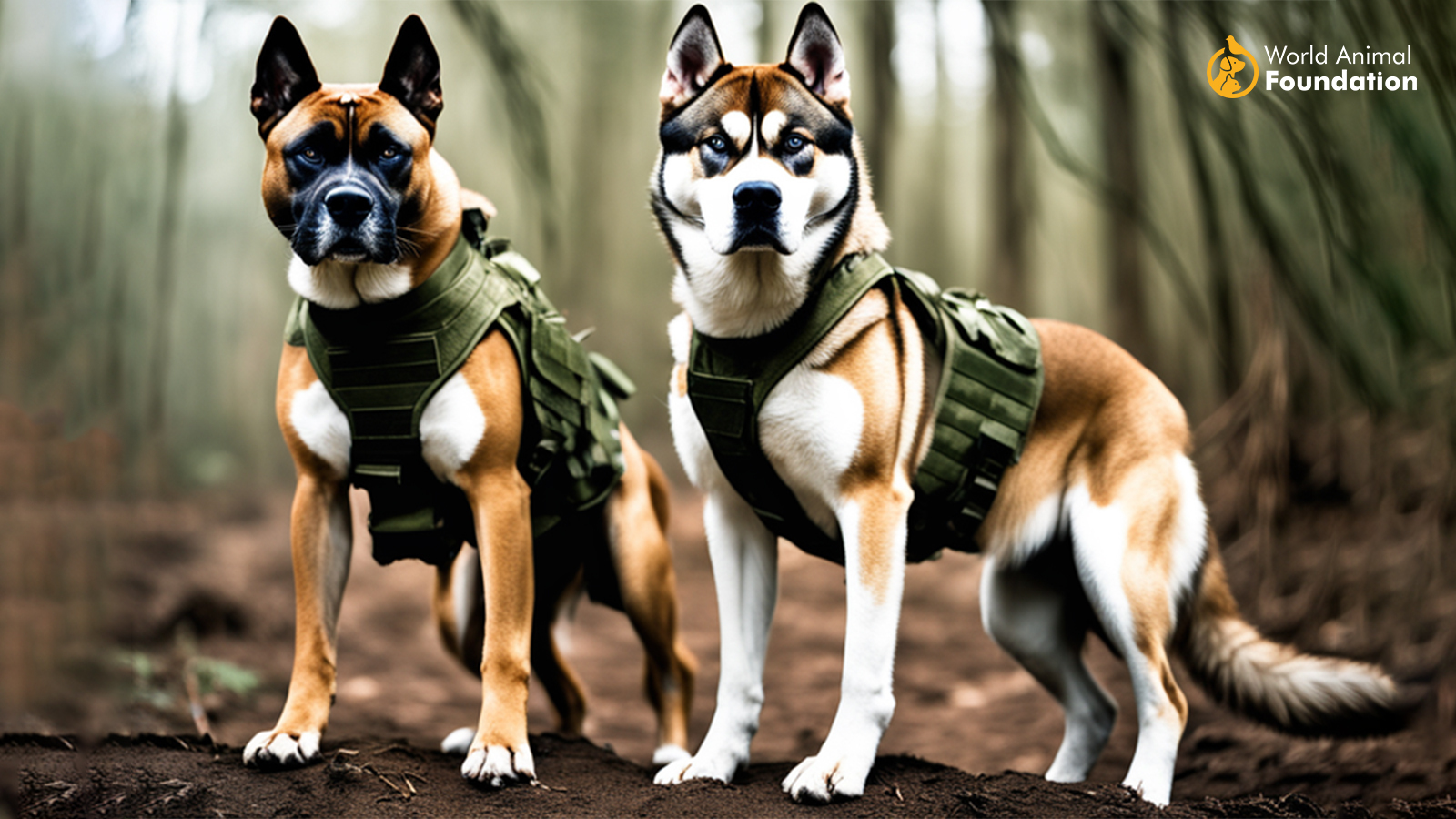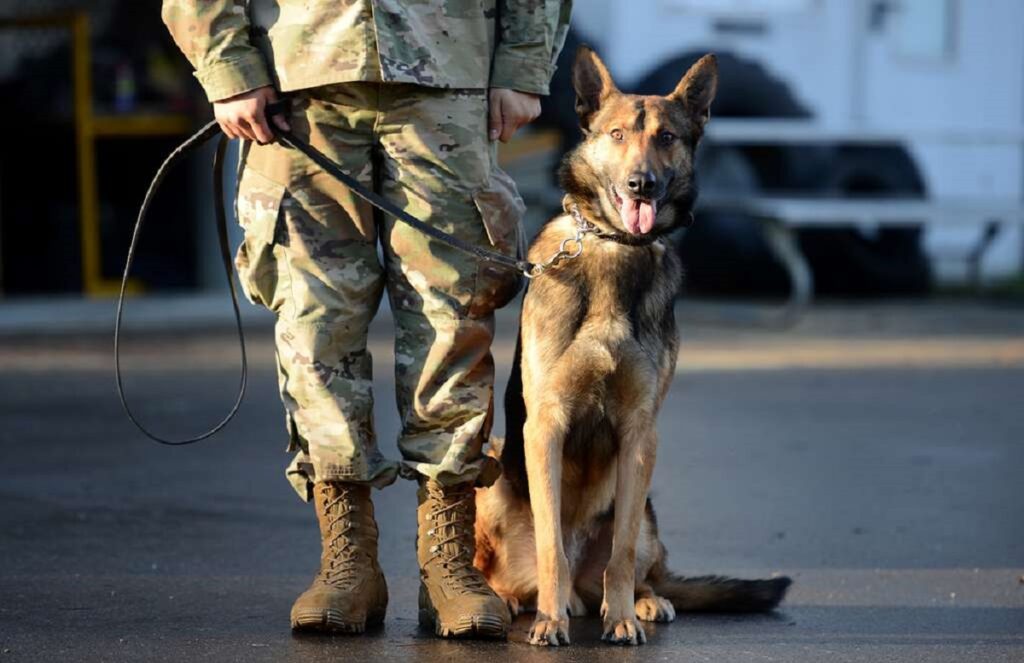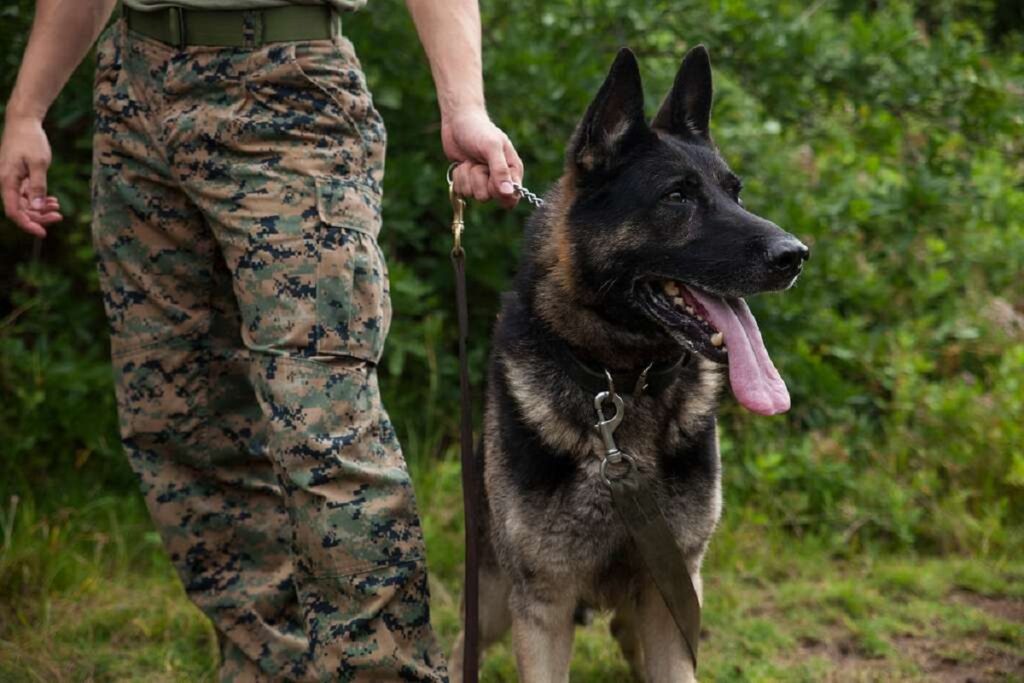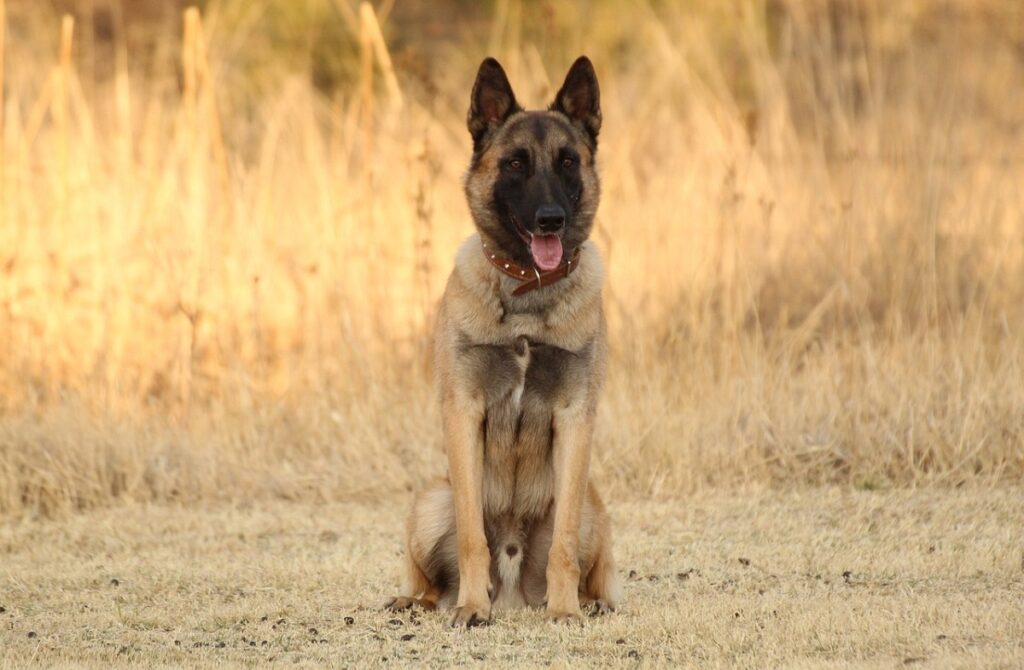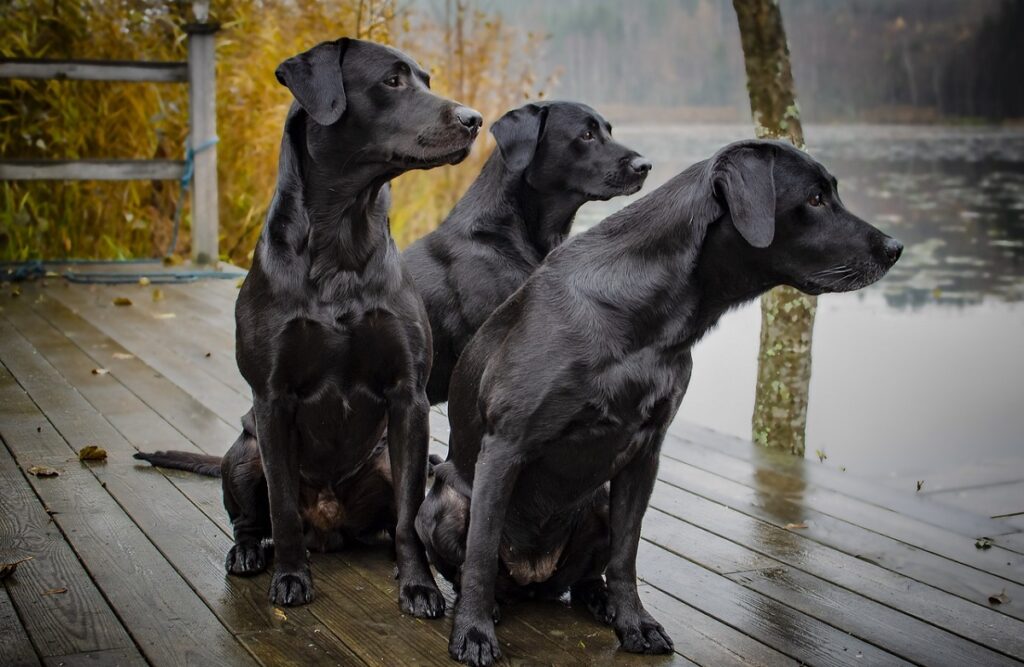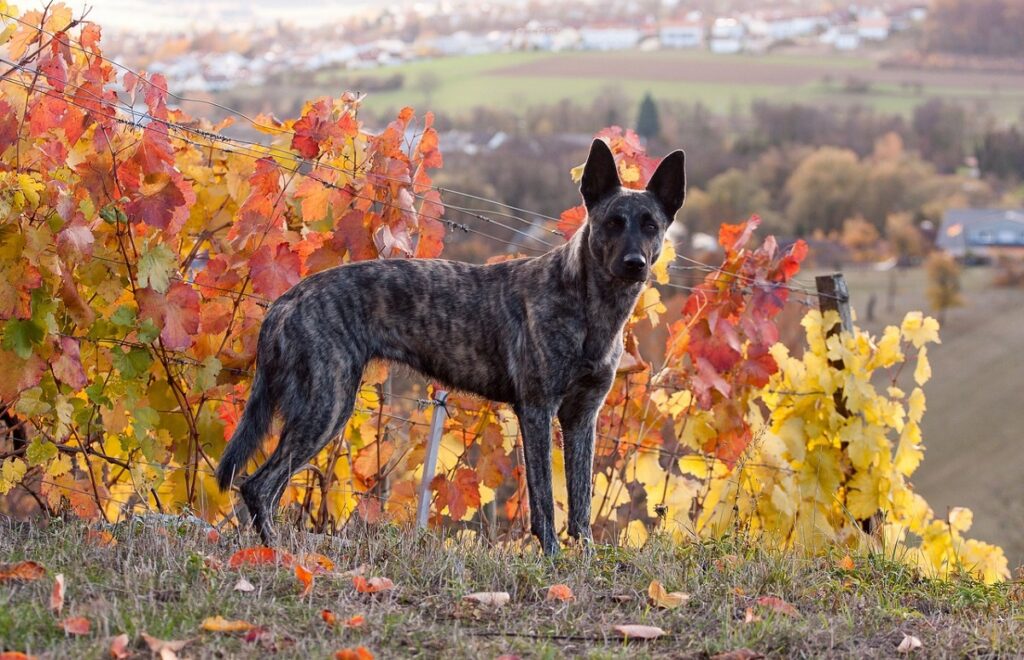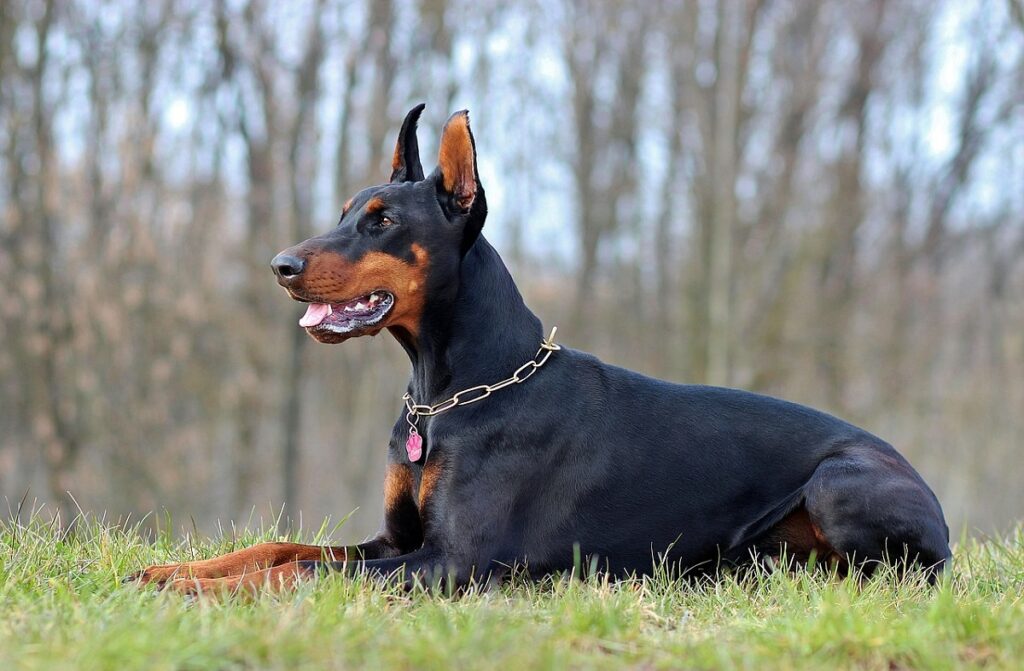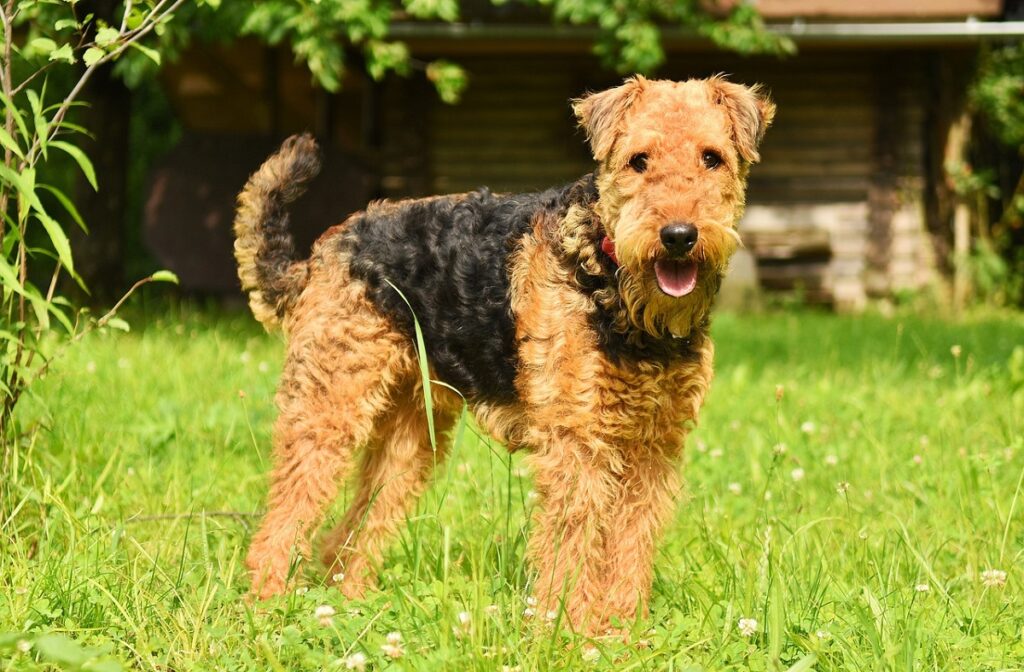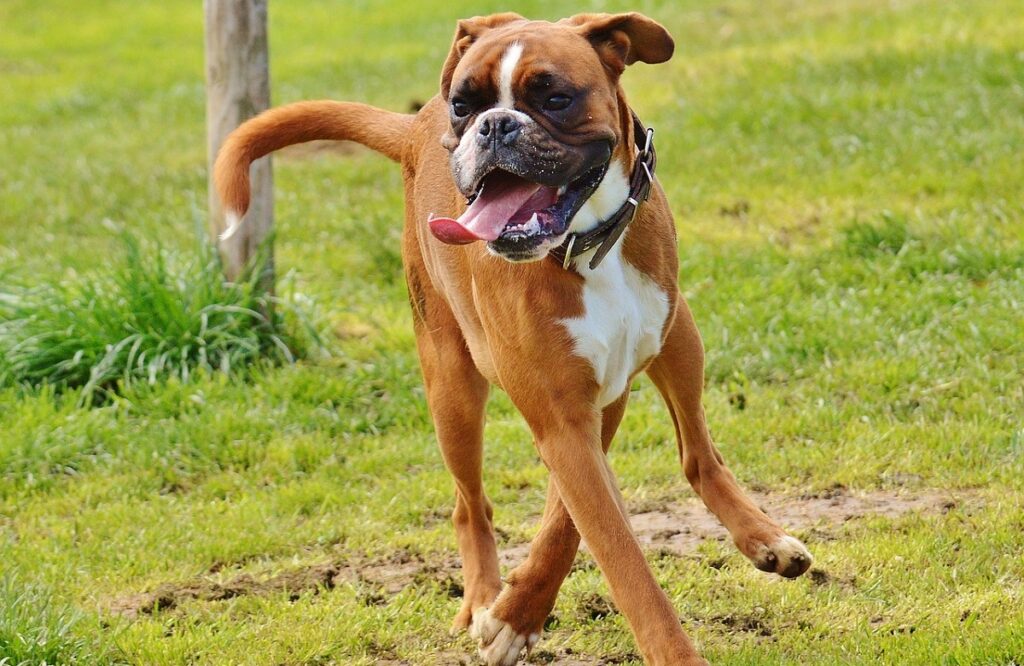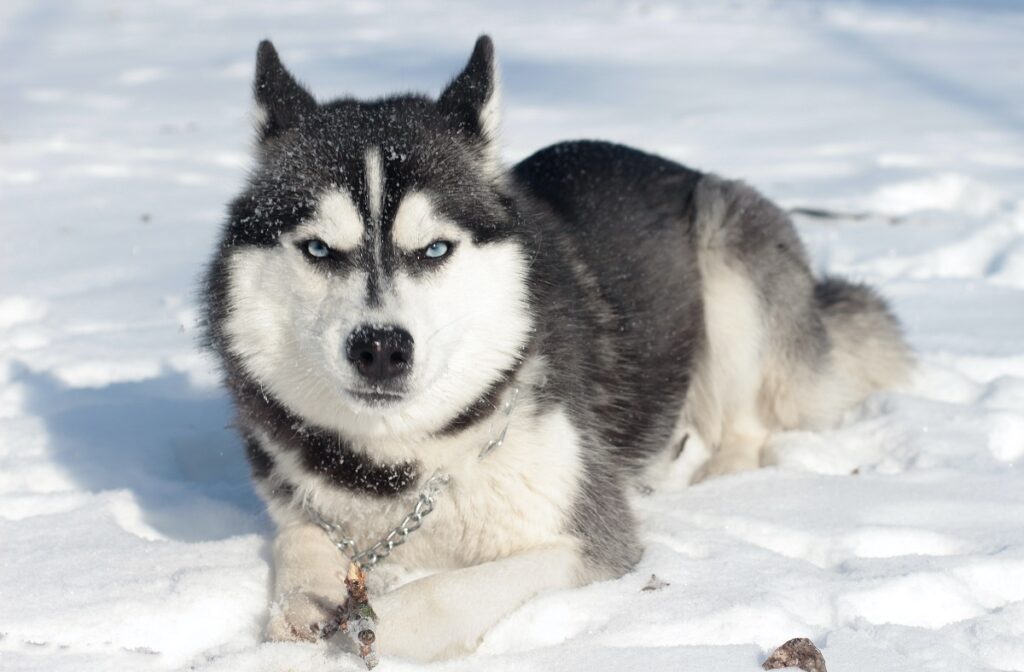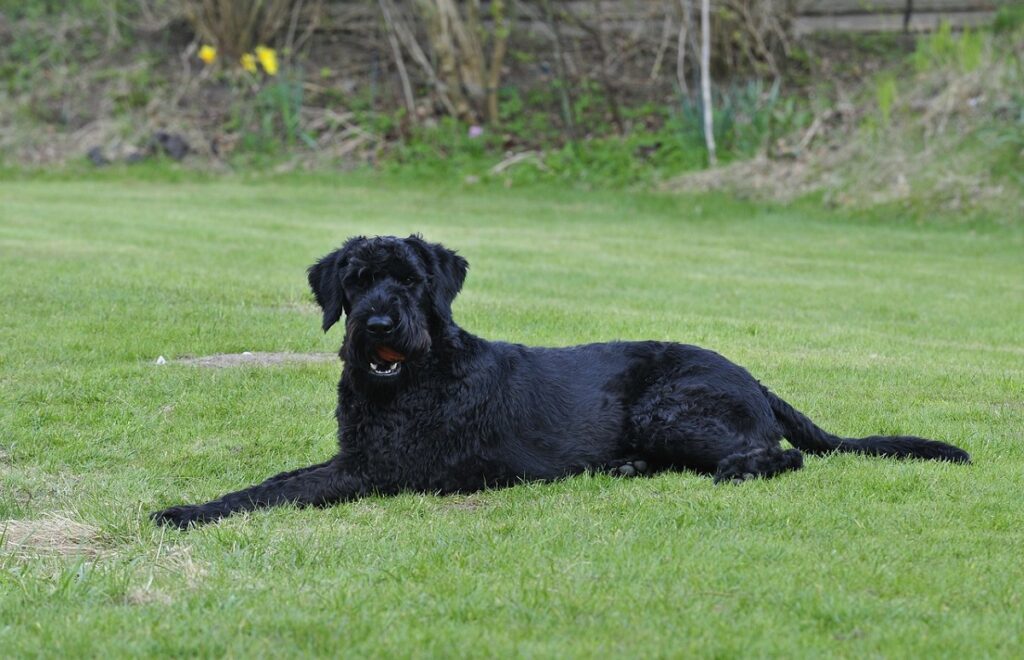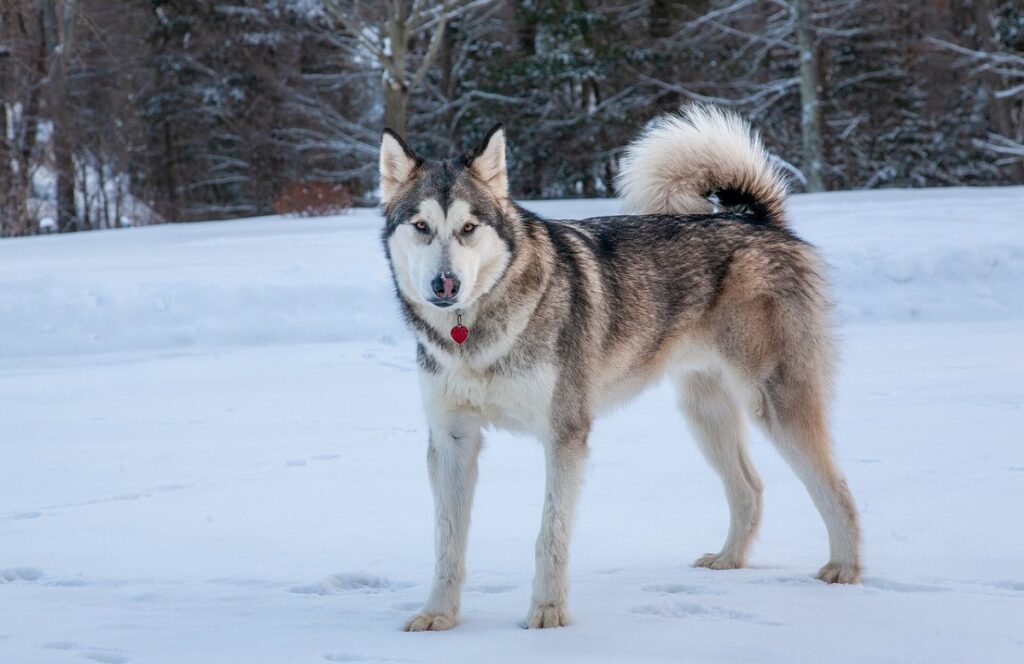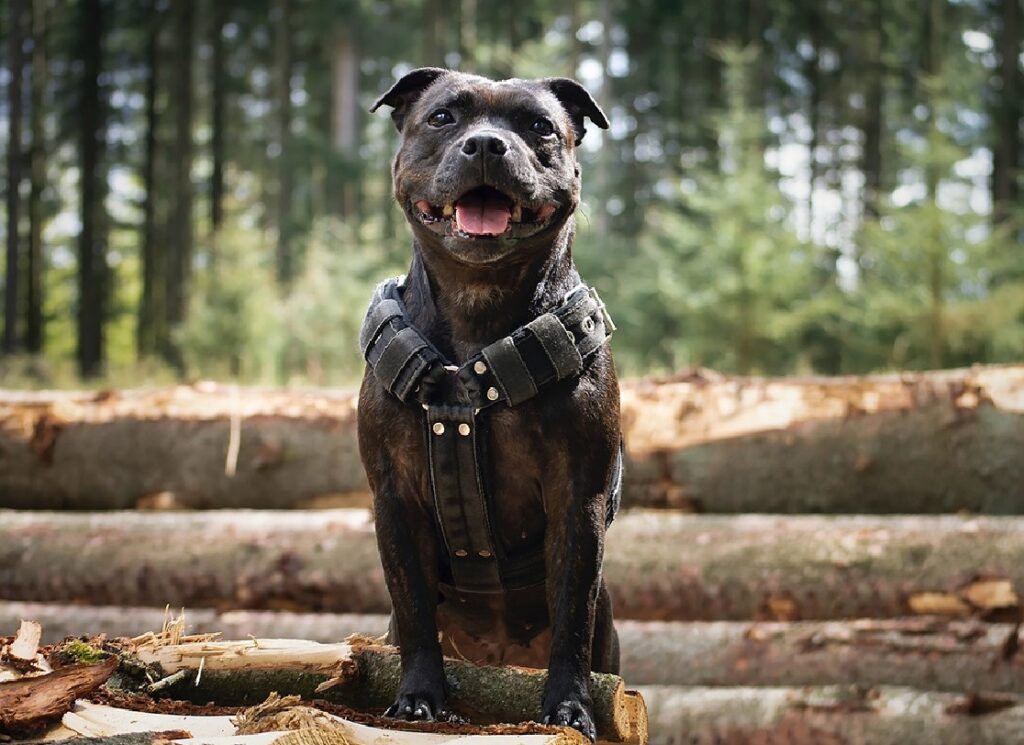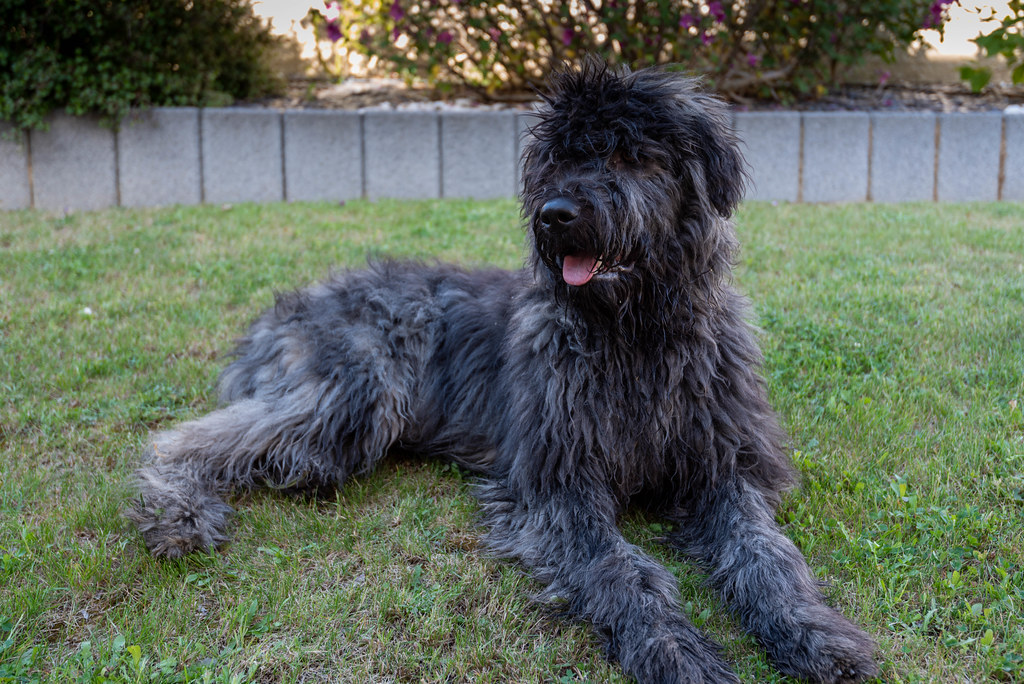From bomb-sniffing Labradors to patrol-ready German Shepherds, dogs have served alongside soldiers for centuries. These unsung canine heroes, bred for specific skills and unwavering loyalty, play vital roles in protecting nations worldwide. This list explores the top 15 military breeds, highlighting their unique attributes and contributions, from sniffing out hidden explosives to fearlessly pursuing enemies. Discover the incredible courage and unwavering dedication of these four-legged warriors who bravely serve alongside human counterparts in the most challenging environments.
The United States Department of Defense (DOD) recruits U.S. military dogs from elite breeders around the globe and breeds about 13% of their canines in the DOD Military Working Dog Breeding Program, which they refer to as the Puppy Program.
They only breed Belgian malinois because they are energetic, have a great sniffer, are easy to train, fast, motivated, loyal, fierce (when they need to be attack dogs), and have an impressive work ethic. When necessary, Belgian malinois can be one of the most dangerous breeds.
The Army has around 600 dog teams and military service canines have been saving lives and preventing injuries since 1942, when the US Army K9 Corp was founded. Military canines are incredible canine friends.
These dogs are so revered that in 2019, the U.S. Postal Service issued military dog breed stamps of the German shepherd, Belgian malinois, Labrador retriever, and the Dutch shepherd.
Military Dog Breeds
Military working dogs play an important role in the armed forces and are an essential component.
Fun fact: Military working dogs are officially given a higher rank than their handlers.
Here are 15 of the best army dogs that possess a variety of vital skills. Many of them are helpful in battle, and some help service members by providing therapy, opening doors, detecting seizures, and more.
1. German Shepherd
Captain Max von Stephanitz of the German Army trained German shepherds from 1899 to 1914. He bred them focusing on the traits of loyalty, intelligence, tenacity, endurance, and dedication — making them perfect for the military and police. He loaned a German shepherd to the police force, where the dog demonstrated tracking, protection, and obedience skills. White German shepherds can be in the military.
German shepherds served in both World Wars and the Vietnam and Korean Wars. More recently, the German shepherd was used in Iraq and Afghanistan. The German shepherd and the Belgian Malinois are the most common breeds of military working dogs because they are very adaptable, strong, brave, dependable, intelligent, fast, have a great olfactory sense and endurance and are affectionate dogs.
German Shepherds left herding sheep behind. They are the most popular choice for armies globally because of their fearless nature in military service.
Two military duties of the German shepherd are working with Navy SEAL teams and skydiving from planes with Special Operators (called HALO jumps). They also become aggressive, when necessary, more than other dog breeds. They are among the most popular breeds.
2. Belgian Malinois
Belgian Malinois are valued members of the U.S. military. Belgian Malinois works with the elite Navy SEALS, and the most famous is Cairo, who helped SEAL Team 6 capture Osama bin Laden in 2011. SEAL dogs wear body armor and night-vision goggles.
Belgian Malinois also skydive and are reputed to be better skydivers than their German shepherd cousins because they weigh less — making it easier for military parachutists to make tandem jumps while their dogs are strapped to them. The dogs can even be trained to jump on their own, which is safer for them when they land in the water because they are great swimmers.
Some of the Mal’s talents are detecting explosives or drugs, tracking targets, and protecting humans. They are fast learners, athletic, loyal, adaptable to military operations, and have thick coats. Because of their high intelligence, they perform complicated tasks well under pressure, making them well-suited for the military.
3. Labrador Retriever
Labrador retrievers were used in Afghanistan as Improvised Explosive detection dogs. Due to their being retrievers and hunters, they are invaluable in detection tasks. They are easier to control remotely than German shepherds by using whistles and arm signals. In addition, Labs work well off-leash and can ease the stress of military work.
In the Vietnam War, Labradors worked with four or five combat troops and went deep into the jungle to rescue injured troops. They are well-suited to many different assignments and are very loyal.
The Labrador Retriever also has a keen sense of smell and can detect 17 different homemade explosive scents. Labs can sometimes detect an explosive when the Marine’s combat metal detectors don’t, making them a popular choice as bomb detection dogs.
4. Yorkshire Terrier
During World War II, a soldier heard a whimpering dog and brought her back to his barracks. Soon after, he sold her to a man, William Wynne, whom he was playing poker with. Smoky was a Yorkshire terrier who became a real soldier, learned over 200 hand signals and commands, ate C-rations, slept in a soldier tent, and spent her days in Wynne’s backpack as he carried out duties.
Wynne had trained dogs in his civilian life, so he taught Smoky all about the army. She survived over 150 Japanese Kamikaze attacks in New Guinea and flew 12 rescue and recognizance missions. Smoky, who had a fearless nature, also survived a typhoon on Okinawa and warned Wynne of an incoming attack while they were on a landing craft.
She was able to pull telegraph wires through a 70-foot-long pipe that was eight inches in diameter when the US invaded the Philippines in 1945. Her unit was building an airbase under heavy bomb attacks. They tied the cable to her collar, and she went through the pipe. It would have taken days for the human officers to dig up the taxiway — while under enemy fire.
Smoky also provided entertainment for the troops and the wounded in hospitals all around the Pacific Theater. Wynne sent a photo of her in a GI helmet to Yank Magazine, the Army‘s weekly publication for U.S. troops, when they advertised a contest to find the best unit mascot. She was crowned “Champion Mascot in the Southwest Pacific Area.”
U.S. troops were ordered to leave their animals before coming home at the end of the war, but Wynne smuggled Smoky in an oxygen mask bag. Once they returned to his home in Cleveland, they visited veterans in hospitals. Yorkies are known for their loyalty, and Wynne demonstrated his loyalty to her.
5. Dutch Shepherd
Dutch Shepherds make great tracking dogs and are known for their versatility, intelligence, and being highly trainable, so they are useful in many military duties. This breed’s resourcefulness and adaptability are attributes that are highly sought after in military dog breeds as well as law enforcement dogs.
The Dutch shepherd is talented in agility and obedience. Dutch shepherds are known for their endurance and physical strength, making them perfect for military tasks. Dutch shepherds are also loving, energetic, lively, athletic, and protective, and they need mental stimulation
6. Doberman Pinscher
The Doberman is used less often as military dogs because they are high-strung. Despite that, they’re a popular choice because they are protective, loyal, and fearless with lots of energy and stamina and served in both World Wars.
The Doberman pinscher worked in search and rescue missions and rescued wounded soldiers. Doberman pinschers also found landmines and enemies. In addition, they were guarders, messenger dogs, patrol dogs, and sentries.
Dobies were the preferred military dog and nicknamed the ‘Devil Dog of the Marines’ in the Marine Corps for their ability to deliver ammunition, messages, and medical supplies and warn soldiers of strangers coming into the area.
7. Airedale Terrier
An Airedale terrier named Jack was a military hero who was given the United Kingdom’s highest military honor during World War I. He earned the Victorian Cross after delivering a message that saved a cut-off battalion. Jack ran through the trenches and was injured by shrapnel.
Airedales guarded the front lines in battle so they could alert the World War I troops when the enemy appeared. In addition, they served as rescue dogs for the Red Cross.
Due to their characteristics of being intelligent, courageous, and having a protective nature, they are still employed as police dogs but not employed in the military. Airedales, a popular breed, are communication dogs.
8. Boxer
During World War II, Boxers delivered note messages that were tied to their collars. Boxer dogs were taught to work with two handlers, taking the message from one and giving it to the other.
They also carried packs and gear for soldiers across the battlefield. A Boxer named Vittles, wearing a parachute, jumped out of planes with Allied forces. Boxers characteristics include being brave, energetic, smart, good with kids, fun, playful, protective, muscular, and trainable. They are also known for their strength and agility.
9. Siberian Husky
Siberian Huskies have been valuable as military service dogs, especially after the Pearl Harbor attack. In 1941 the US had 90 Siberian Huskies and Malamutes because they are the fastest and strongest Arctic sled dog breeds. The Army used them for search and rescue missions in spots that motorized equipment couldn’t reach.
Canadians helped Siberians to jump from planes and bring supplies to airmen who had fallen into isolated locations.
10. Giant Schnauzer
Giant schnauzers serve in the armed forces using their sniffing skills as explosive detector dogs. During World War II, the Giant schnauzer was used by the Air Force but weren’t used again until the early 1980s.
Giant schnauzers were promoted from farm dog, but gained popularity when they were taught basic odor detection and room searching as well as biting, holding, and obeying. They are excellent guard dogs and are often on patrol. Dogs working for the armed forces at the Royal Air Force Mildenhall in England’s military are allowed to play with their toys after completing a task. So cute!
Not long ago, a military working schnauzer named Brock was part of the security detail for President Donald Trump when he attended the G20 Summit in Hamburg, Germany. Brock collaborated with the Secret Service dog teams.
11. Rottweiler
Rottweilers are robust and strong, making them well-suited for the military. They have mad guarding instincts and are resilient, which are important qualities when on patrol. They have been used to pull carts carrying supplies and as draught dogs.
Rottweilers are highly trainable, playful, need mental stimulation, and have a fearless nature — as a bonus, they are loving and known for their loyalty. They are a dog with the strongest bite force. Rotties also carried messages like other messenger dogs.
12. Alaskan Malamute
During World War II, the U.S. military needed an advantage in Europe because the winters were brutally cold, and it was very challenging to transport important supplies and injured soldiers and operate search and rescue missions. The Alaskan malamute is well-suited to completing tasks in freezing cold weather and has a strong sense of direction, stamina, and endurance.
Secretary of War, Henry L. Stimson founded the “Dogs for Defense” program. The US Army’s Quartermaster Corps was in charge of finding and training the army dogs. As sled dogs and pack dogs, the Alaskan malamute was the perfect breed to carry military equipment in the frigid winter in Europe, Greenland, and Baffin Island in Canada. The demand for Alaskan malamutes declined after World War II.
Alaskan malamute war dogs were killed after the war. The National Defense Authorization Act states that retired military dogs are to be adopted and veterinary care provided for them. A bill was passed in 2013 with the help of Senator Richard Blumenthal (D-Conn.) and Representative Walter Jones (R-N.C.).
13. Staffordshire Bull Terrier
Staffordshire Bull Terriers are from the UK. The Regiments of Staffordshire British military had a mascot tradition that began in 1882 when they were ordered to march with Lord Wolseley. They boarded a train in Cairo with their Staffordshire Bull Terrier “Boxer.” Boxer jumped off the moving train and was seen lying on the ground motionless as the train sped away.
A few days later, the Regiment was at Assiut waiting for orders for the final phase of their march, and a very thin and exhausted dog entered the camp and collapsed. Boxer had walked for over 200 miles through the scorching desert railway track to find his regiment. That’s when the tradition of having a Bull Terrier as a mascot began with the battalions until after the Second World War.
The American Kennel Club describes Staffies as clever, courageous, and tenacious. Boxer demonstrated all three attributes during his journey to find his regiment. They are an asset in the military because their characteristics are being energetic, protective, adaptable to military operations, and trainable.
Staffies are known for their loyalty, and other traits include being loving, playful, friendly, and good with children — making them great dogs professionally and personally.
14. Bouvier Des Flandres
Flanders, Belgium, became a battlefield during World War I, and Bouvier des made a career change from cattle herders to war dogs that carried messages and pulled stretchers as ambulance dogs for the armed forces.
Tragically, many dogs were lost during the war, and the breed nearly went extinct. Some people brought the Bouviers from Belgium to France and the Netherlands and saved them. Bouviers served in WWII as well and became endangered again.
Bouvier Des Flandres continues to be a popular choice for military dogs and is one of the best police dog breeds, search and rescue, and guide dogs for hearing and visually impaired.
15. Border Collie
The Border Collie is known for their intelligence and being highly trainable. They are also famous for their loyalty. Border collies were originally bred for herding sheep, but during WWI, they searched for injured soldiers, carried messages, and warned their handlers when the enemy approached. Despite their service during WWI, their popularity didn’t rise until after WWII.
FAQs
What Is the Best Dog for a Soldier?
The best soldier dog is the German Shepherd.
Are Black Russian Terriers Used for Military Purposes?
The Black Russian Terrier was created after WWII. They are powerful guard dogs, have a great sense of smell, and double coat to protect them from harsh climates. The Russian military also uses them because they are highly intelligent.
What Is the Most Common Military Dog Breed?
The German shepherd is the most common military dog in the world.
Conclusion
The 15 breeds mentioned in this article have skills and talents that make them excellent military dogs in the armed services. Canines have wonderful versatility. They are great companion dogs and help humans in many other areas like therapy, police, military, herding, and many more.
Some military bases have a volunteer program where people support military dogs and their handlers.
Military working dogs are unsung heroes, integral to the safety and success of armed forces worldwide. From the explosive-detecting Belgian Malinois to the fearless German Shepherd patrol dog, these fifteen breeds exemplify loyalty, courage, and unwavering dedication. Their specialized training and incredible instincts save countless lives, often facing danger head-on. These canine soldiers deserve our utmost respect and gratitude for their invaluable service, proving that bravery comes in all shapes and sizes, especially fur-covered ones. Their contributions are a testament to the powerful bond between humans and animals, a partnership forged in duty and sealed with unwavering loyalty.

